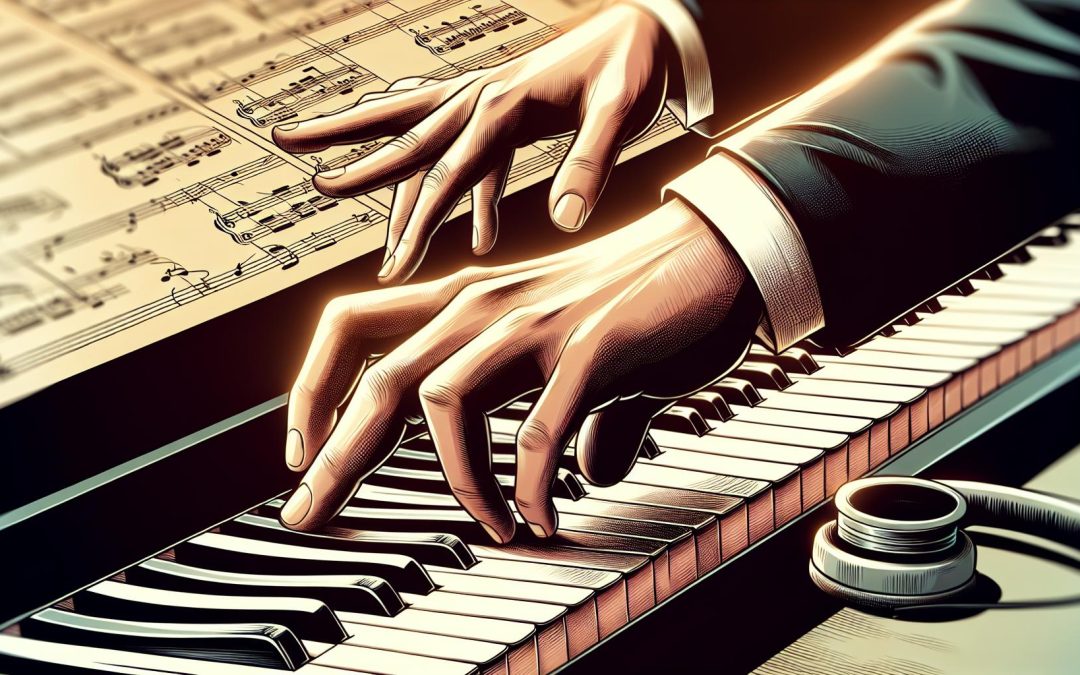Diving into the world of jazz can be a thrilling adventure for any beginner keyboard player. It's a genre that swings with emotion and complexity, yet it holds a treasure trove of easy tunes that are perfect for those just starting their musical journey. Jazz, with its rich history and diverse styles, offers a unique playground for newbies to explore, improvise, and express themselves.
Finding the right songs to start with can make all the difference in building confidence and skill. That's why we've curated a list of easy jazz songs that are not only fun to play but also serve as a gentle introduction to the wider world of jazz. These pieces will help you get comfortable with jazz rhythms, harmonies, and the improvisational spirit that makes jazz so captivating. Let's swing into the basics and set the foundation for a lifelong love affair with jazz.
Understanding Jazz Basics
Before diving into the pool of jazz songs suitable for beginner keyboard players, it's essential to grasp a few fundamental concepts of jazz music. Jazz, known for its emotional depth and improvisational nature, offers a unique challenge even to seasoned musicians. However, it's this very improvisation and emotional communication that can make it incredibly rewarding for beginners.
First and foremost, jazz is all about rhythm. The swing rhythm, characterized by a delayed second beat, is a staple in many jazz pieces. It's this swinging that gives jazz its distinctive feel. For those new to the genre, mastering the swing rhythm can be both challenging and fun. Starting slow and using a metronome can help beginners internalize this rhythm pattern.
Another crucial aspect of jazz is harmony. Jazz harmony involves a wide variety of chords with extensions beyond the basic triads found in many other genres of music. Seventh chords, ninth chords, and even more complex structures are common in jazz, offering a richer, more vibrant sound. Beginners shouldn't feel intimidated by these chords. Learning even a few basic seventh chords can open up a world of sound and provide a solid foundation for further exploration.
Improvisation is perhaps the most iconic feature of jazz music. This doesn't mean playing random notes but rather expressing oneself within the framework of the song, exploring different melodies and harmonies. For beginners, improvisation might seem daunting, but it can also be liberating. Starting with simple scales or motifs and experimenting over the basic chord progressions of a song can be an excellent way to dip one’s toes into jazz improvisation.
To tie these concepts together and apply them, it’s helpful to listen to jazz frequently. Listening to jazz can attune one's ear to the nuances of the genre, from the swing of the rhythm to the richness of the harmonies. Moreover, it can inspire beginners by showing them the vast landscape of expression jazz offers. In addition to listening, playing along with recordings can be a practical exercise. It allows beginners to practice timing, get comfortable with jazz rhythms, and even try out some improvisation in a supportive context.
Lastly, understanding jazz also involves learning about its structure. Many jazz songs follow the 12-bar blues or the 32-bar AABA form. Recognizing these structures can help beginners anticipate changes in the song and understand where there might be room for improvisation.
Benefits of Playing Easy Jazz Songs

When venturing into the world of jazz as a beginner keyboard player, starting with easy jazz songs offers a myriad of benefits that extend far beyond the immediate joy of playing music. These songs serve as an essential foundation, building both confidence and skills in various fundamental areas of musicianship.
Firstly, easy jazz songs help in developing a solid sense of rhythm. Jazz music, known for its unique swing feel, requires players to internalize rhythms that are often more complex than those found in other genres. By tackling simpler compositions, beginners can gradually acclimate themselves to the syncopated rhythms characteristic of jazz, laying a strong groundwork for more advanced pieces.
Chordal knowledge receives a significant boost as well. Jazz harmony is renowned for its complexity, with seventh chords, extended chords, and altered chords forming the backbone of its sound. Easy jazz pieces often utilize these elements in a more accessible context, enabling learners to familiarize themselves with these harmonic structures without feeling overwhelmed. This early exposure is crucial for developing the ability to navigate the keyboard's vast harmonic landscape with ease.
Moreover, playing straightforward jazz tunes introduces beginners to the art of improvisation—a cornerstone of jazz music. These compositions often include sections where players can experiment with simple improvisational concepts, such as riffing on a melody or creating new lines over a set chord progression. This practice is invaluable, as it encourages creativity, enhances musical ear, and fosters a deeper connection to the music being played.
Another significant advantage is the opportunity to learn common jazz standards. Many easy jazz songs are simplified versions of these standards, which are not only fun to play but also serve as essential repertoire for any jazz musician. Knowing these standards enables players to participate in jam sessions and collaborative projects, further enriching their musical journey.
Engaging with easy jazz songs also nurtures listening skills. Jazz is as much about listening as it is about playing, and these simpler compositions allow beginners to more easily identify and understand the genre's distinctive elements, such as call and response, improvisation, and the interplay between soloists and rhythm sections. This attentive listening cultivates an appreciation for jazz's intricate beauty and can inspire learners to explore a wider range of jazz music as their skills advance.
Lastly, emotional expression through music is significantly enhanced. Jazz, with its emphasis on individuality and feeling, offers a unique outlet for emotional release and personal expression.
Top 5 Easy Jazz Songs for Beginner Keyboard Players

Embarking on the jazz journey can be both exhilarating and daunting for beginner keyboard players. However, starting with easy jazz songs can make the transition smoother and more enjoyable. Here’s a curated list of five easy jazz songs that are perfect for those just starting out on the keyboard. These selections not only reinforce basic skills but also introduce beginners to the joy and depth of jazz music.
1. "Autumn Leaves" by Joseph Kosma
"Autumn Leaves" is a must-learn for jazz beginners due to its simple chord progression and memorable melody. This classic standard introduces players to the concept of 2-5-1 progressions, a cornerstone in jazz music, in a very accessible way.
- Key Features:
- Memorable melody
- Introduction to 2-5-1 progression
- Explores minor keys
2. "So What" by Miles Davis
Featured on the iconic album Kind of Blue, "So What" is noted for its modal jazz style. It provides a great foundation in improvisation for beginners with its minimalist chord changes and spacious structure.
- Key Features:
- Emphasizes improvisation
- Minimal chord changes
- Iconic modal jazz example
3. "Take the 'A' Train" by Billy Strayhorn
A quintessential jazz piece, "Take the 'A' Train" introduces beginners to swing rhythms and the blues scale. With its catchy melody and repetitive structure, it's a fun and engaging song that helps solidify basic jazz concepts.
- Key Features:
- Catchy melody
- Swing rhythm practice
- Blues scale introduction
4. "Blue Monk" by Thelonious Monk
Thelonious Monk's "Blue Monk" is an excellent choice for beginners interested in exploring blues elements in jazz. Its straightforward chord progression and bluesy feel offer a solid base for improvisation and rhythmic exploration.
- Key Features:
- Straightforward chord progression
- Bluesy feel
- Improvisational opportunities
Tips for Mastering Jazz Techniques

Embarking on the journey of learning jazz on the keyboard unfolds a world of musical expression and technical growth. To aid beginners in mastering key jazz techniques and truly embracing the spirit of this genre, here are some invaluable strategies.
Listening Actively to Jazz Classics is the cornerstone of understanding the nuance behind jazz’s rhythmic, harmonic, and melodic complexities. By immersing themselves in the works of jazz legends such as Miles Davis, Thelonious Monk, and Duke Ellington, beginners can develop an ear for the distinctive syncopation and improvisational styles that define jazz. It's not just about hearing the notes but also feeling the rhythms and understanding the emotional expressions behind them.
Practice with a Metronome to hone timing and rhythm. Jazz music often utilizes swung rhythms and syncopation. Practicing scales, chords, and songs with a metronome can help beginners internalize the beat, ensuring that their playing swings in true jazz fashion. This foundational skill is vital for solo performances and even more so when playing in a group, where timing is everything.
Diving into Theory and Harmony unveils the building blocks of jazz music. Jazz harmony is known for its complexity, including extended chords and modulations, which create its rich soundscapes. Beginners should start with learning the 2-5-1 progression, a staple in jazz compositions, as it provides a solid foundation for understanding how jazz chords move and interact. Resources such as online tutorials, books, and courses can be invaluable for this purpose.
Improvisation is at the heart of jazz. It allows musicians to express their individuality and interact musically with others. Beginners might feel intimidated by the thought of improvisation, but starting small can make a big difference. One can begin by improvising over a single chord or a simple chord progression, gradually expanding to more complex sequences. Listening to solos by jazz greats and trying to mimic their style is a fantastic way to develop one's improvisational skills.
Playing Along With Recordings offers a dual benefit; it's both educational and immensely fun. By playing along with recordings, beginners can get a real-time sense of timing, improvisation, and the overall structure of jazz pieces. It's an effective way to apply theoretical knowledge in a practical setting, making learning engaging and dynamic.
Conclusion
Diving into the world of jazz on the keyboard opens up a realm of musical exploration that's both challenging and rewarding. By starting with the top 5 easy jazz songs and incorporating the outlined tips, beginners have a solid foundation to build upon. It's all about embracing the journey, from understanding the subtleties of jazz classics to expressing one's unique musical voice through improvisation. Remember, every great jazz musician started somewhere, and these initial steps are vital in cultivating a deep, lasting love for jazz. So, grab your keyboard, let the music flow, and who knows? You might just find yourself creating your own jazz masterpiece.
Harlan Kilstein began playing piano during covid with no piano background at all. He taught himself how to play learning what to do and what not to do.
Today he's an advanced intermediate player and can help you grow in your skills because he learned all this on his own.








